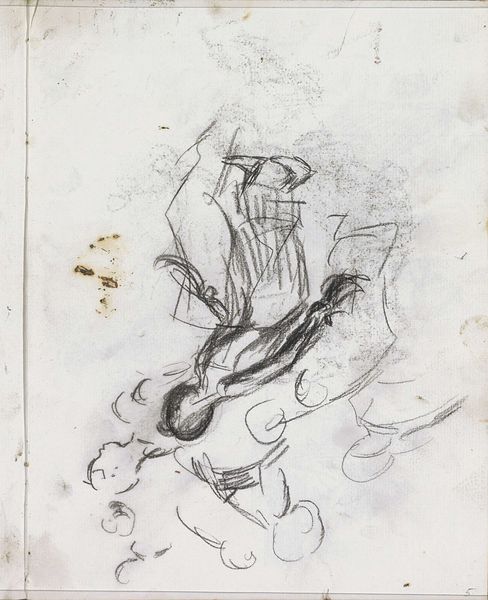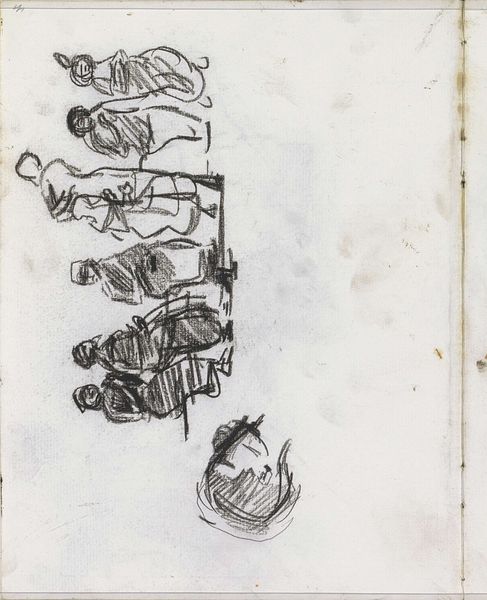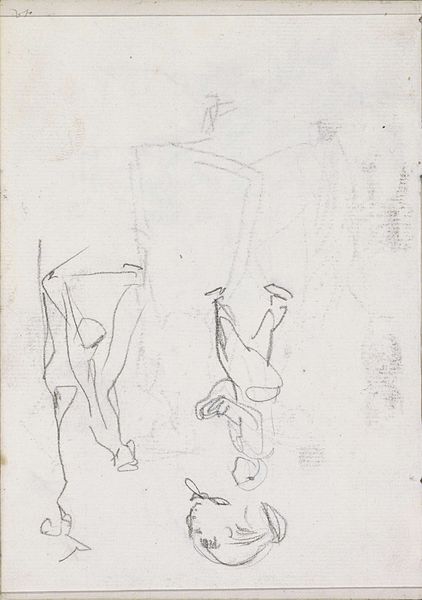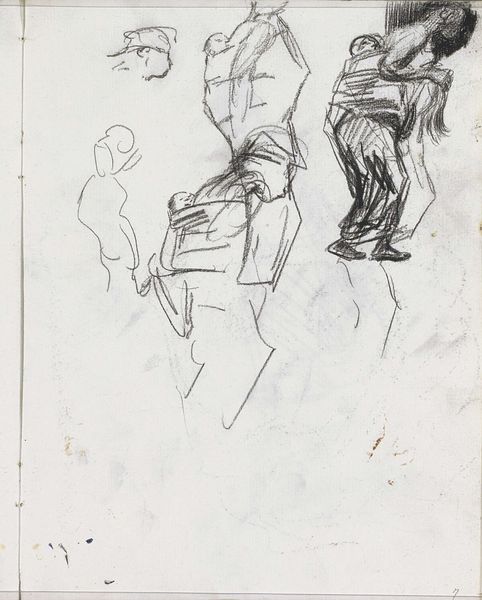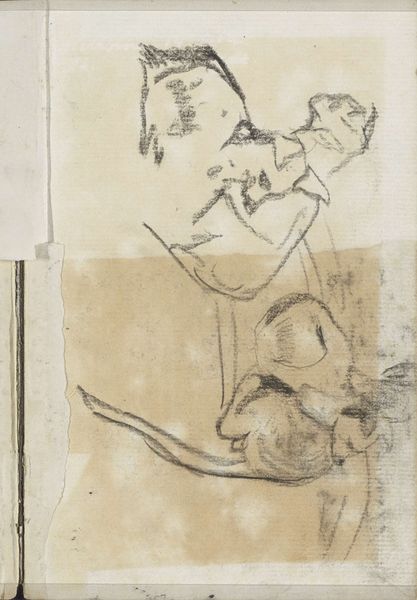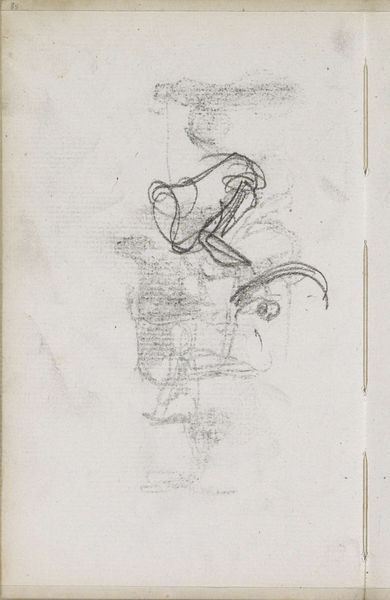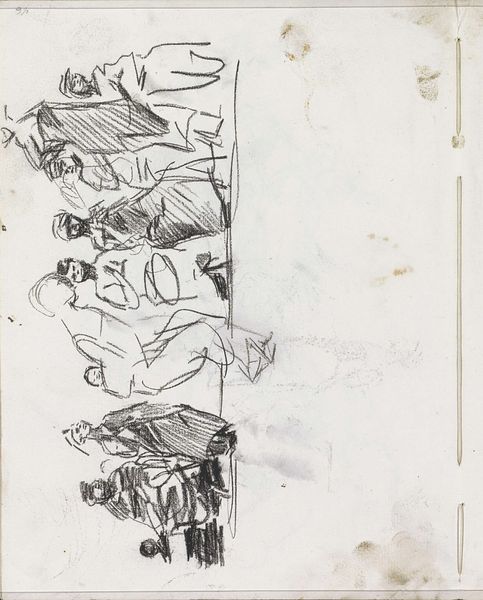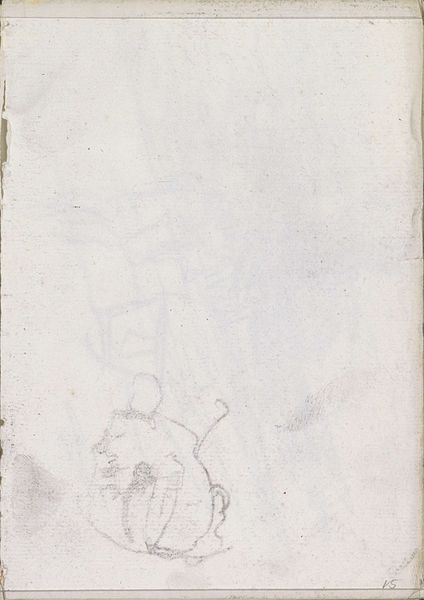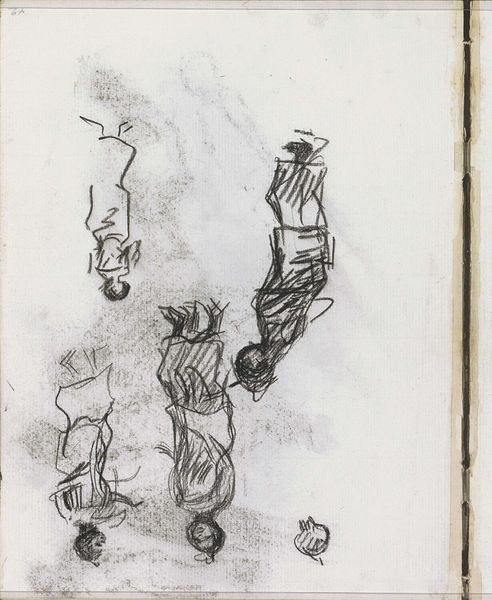
Copyright: Rijks Museum: Open Domain
Curator: Here we have "Vooroverbuigende figuren", or "Figures Bending Forward," a charcoal drawing made sometime between 1875 and 1934 by Isaac Israels, currently residing here at the Rijksmuseum. Editor: It’s captivating in its simplicity. There's something very intimate about it, like glimpsing a fleeting moment. They're huddled together, almost conspiratorial, bending towards something unseen, casting subtle shadows. Curator: Israels, deeply influenced by Impressionism, often captured everyday scenes. These figures, perhaps children, feel very much of the working class. The bent postures indicate they’re likely gathering something, or perhaps playing some street game. It seems like Israels’ work often focused on these slices of ordinary life, providing insight into the world outside wealthy parlors and elite society. Editor: I wonder, though, if their being children truly softens the blow. Are we sentimentalizing potential toil, something less carefree? The medium, charcoal, seems significant here, echoing that sense of grit and the unrefined. This choice feels critical. The raw lines, the almost unfinished quality…it resists any sugarcoating. Curator: Yes, I see your point. There's a very human rawness conveyed so strongly. Israels did grow up within a well-respected family, and was something of a precocious child in artistic circles. Considering that context, there might very well have been an attempt here to bring a new perspective to what images of the working class could mean, rather than turning it into an illustration for entertainment. The reality is given in these quick strokes; you understand the people but never believe it gives you their entire narrative. Editor: Absolutely, and by not sensationalizing, it gives dignity. By just rendering, Israels challenges viewers to construct their own understandings of it all. As such, a little empathy might be created that didn't exist before. Curator: That's what I believe sets Israels apart. In its humble way, it transforms what might've remained unseen or ignored into something profoundly felt, wouldn't you agree? Editor: Indeed, a testament to the power of quiet observation, it asks more than it tells, which is maybe the highest compliment one could offer a work of art.
Comments
No comments
Be the first to comment and join the conversation on the ultimate creative platform.
